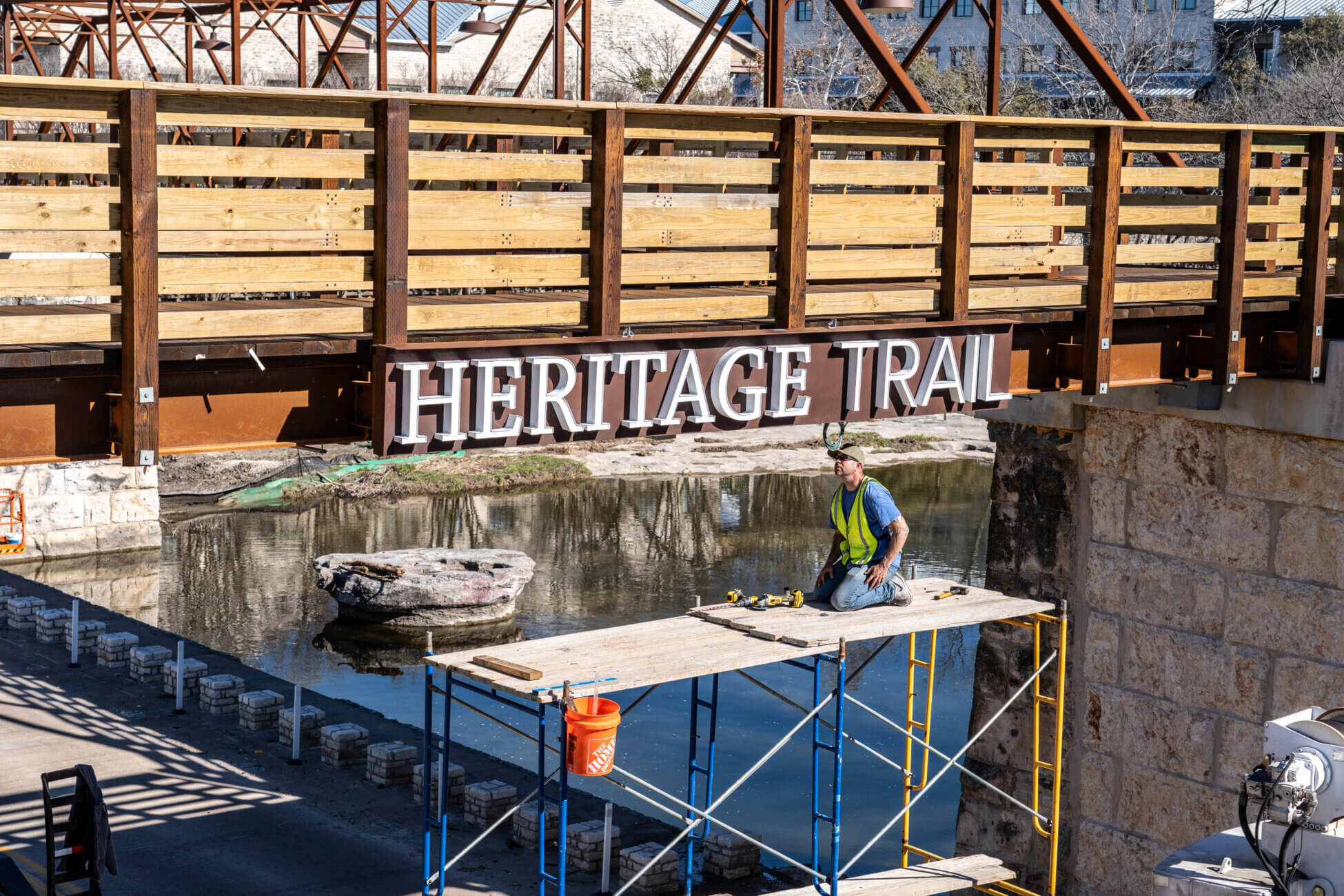Editor’s Note: May is National Preservation Month, when local preservation and civic organizations spotlight their preservation programs and heritage tourism. Learn more at www.roundrocktexas.gov/historicpreservation.
Most people know Round Rock’s historic district as two blocks located along East Main Street, but its earliest settlement is actually an area now known as Old Town. Old Town is located west of Interstate 35 along Chisholm Trail Road, centering around an actual round rock that marks a low water crossing on Brushy Creek.
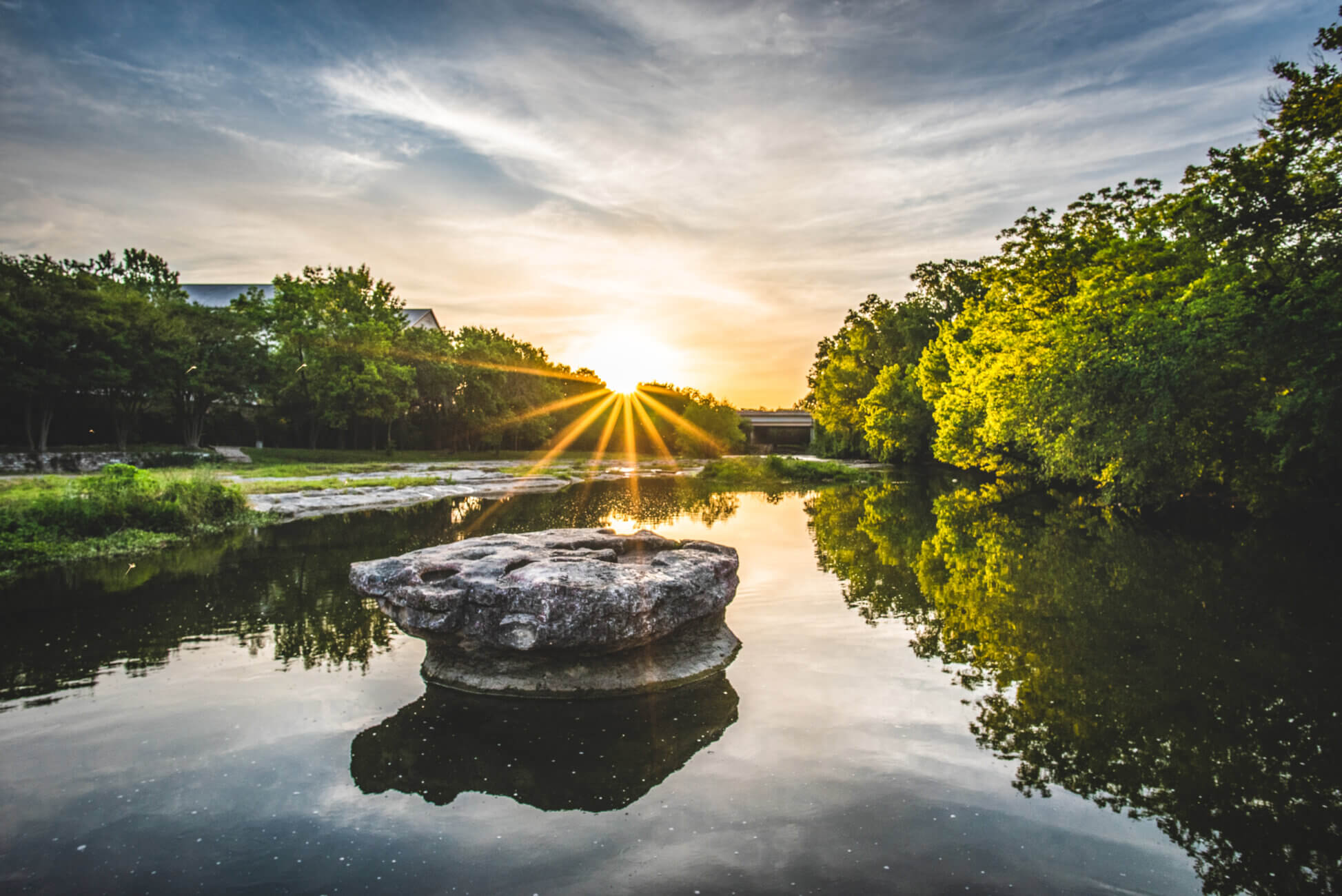
Of course, the earliest residents of the Round Rock area were the two hundred tribes that were the ancestors of the Tonkawa Indians, who often made their temporary villages along the banks of rivers and streams, including Brushy Creek and the San Gabriel River.
Chisholm Trail Road was a military road established by Col. Cooke in the early 1840s at the request of the Republic of Texas President. Until 1936, it was a primary north-south road through the state and was, for a while, known as the Austin-Georgetown Highway. The round rock at Brushy Creek, providing a reliable crossing, became a landmark of this route. As transportation evolved, the trail’s importance waned with the advent of railroads and later highways, yet the road’s historical significance remains embedded in the town’s identity, influencing modern transportation routes and urban development.
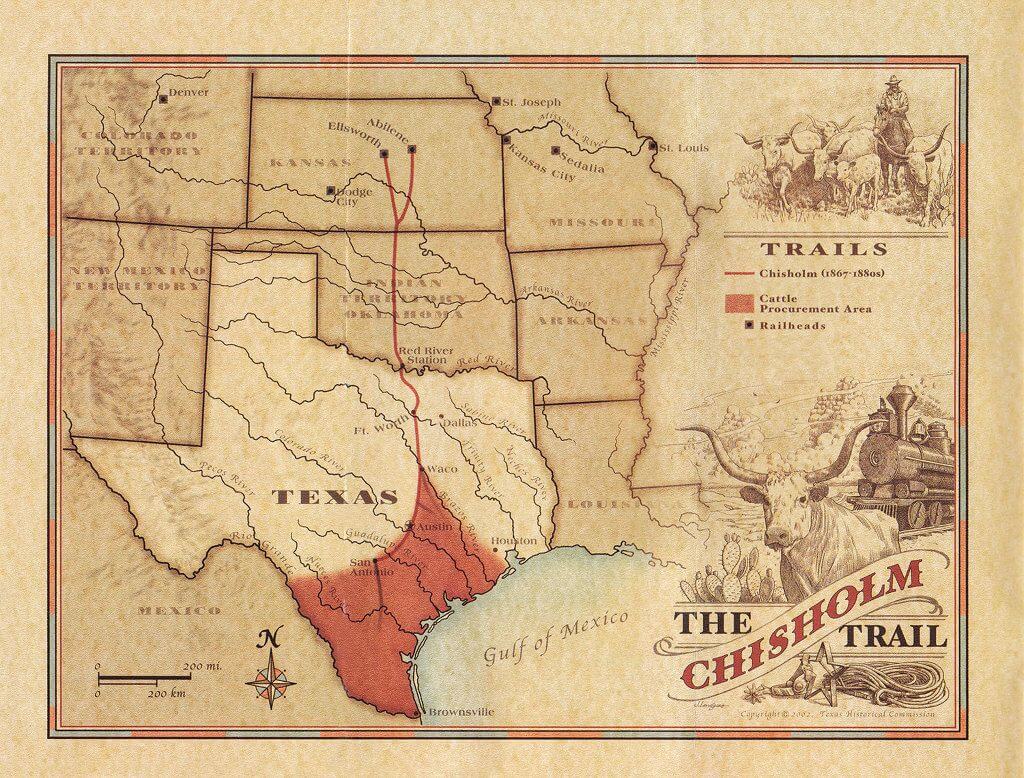
The initial settlement of Brushy (as Round Rock was originally called) was located near the banks of Brushy Creek at the natural fording area by the round rock. In 1848, Jacob Harrell, who was Austin’s first blacksmith, chose to move his shop and house to the north bank of Brushy Creek (the family cemetery that he established can be viewed today at the intersection of Bowman Road and Interstate 35). He saw the potential of the Brushy Creek crossing as more than just a geographic feature; he envisioned it as the cornerstone of a thriving community. Harrell strategically parceled out land on the north bank of the creek for commercial development, laying the groundwork for the settlement that would eventually be recognized as Round Rock. His foresight in urban planning facilitated the transition from a loose grouping of settlers to a structured, vibrant town. By the 1850s, it was a bustling settlement with essential services and a post office. The name “Round Rock” was adopted in 1854, after the distinctive creek crossing rock, with the original settlement area eventually being referred to as Old Town.
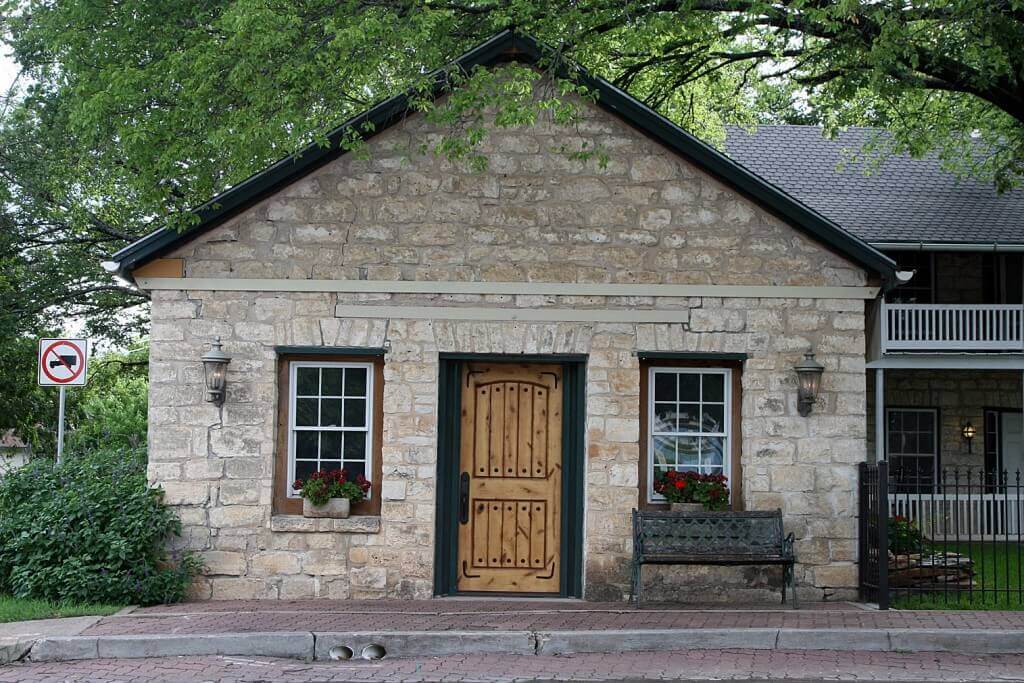
In the tumultuous period following the Civil War, Texas ranchers faced plummeting cattle prices due to the inability to trade with the northern states. The establishment of the Chisholm Trail in the 1860s provided a vital economic artery, connecting Texas cattle to the booming markets in Kansas, where stockyards shipped beef in refrigerated train cars across the Midwest. Old Town Round Rock, situated along one of the feeder routes to this trail, became a critical point in these cattle drives. The drives revitalized the Texas economy and established the cowboy as a central figure in Texas. The eventual renaming of the local road to Chisholm Trail Road in the 1960s commemorated this significant chapter in our town’s history.
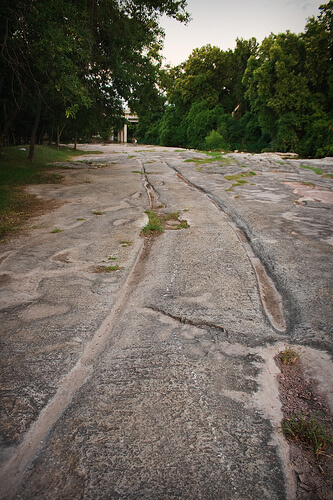
The early settlers in Old Town faced considerable challenges in construction in the mid-19th century. Initial shelters included tents and rudimentary log cabins, evolving as skilled builders gradually arrived. The use of local limestone, quarried along Brushy Creek, became prevalent due to its availability and durability, forming the foundation for many early structures. The transition to more refined building materials occurred with the arrival of the railroad in 1876, enabling the importation of bricks, dimension lumber and other construction essentials. This period saw a shift from basic survival construction to a budding urban architecture reflecting the town’s growth and prosperity. It also signaled the end of the great cattle drives, as more cattle were transported by rail. The coming of the International and Great Northern Railroad in 1876 forced the commercial area of Round Rock to move to the east, to its location today in Downtown Round Rock.
Today, Old Town continues to serve as a living museum of its storied past, with preserved buildings and ongoing projects intended to help share its important history with the community, including the Heritage Trail project, which will be completed later this summer. The Heritage Trail West project will build an approximately 1-mile section of trail from just west of Chisholm Trail Road to Mays Street. This project also includes an overlook along Brushy Creek, improvements to several parks and the inclusion of historical and recreational elements. The goal is to create a connected, accessible and informative space for residents and visitors alike, highlighting the history of Round Rock and providing new recreational opportunities.
